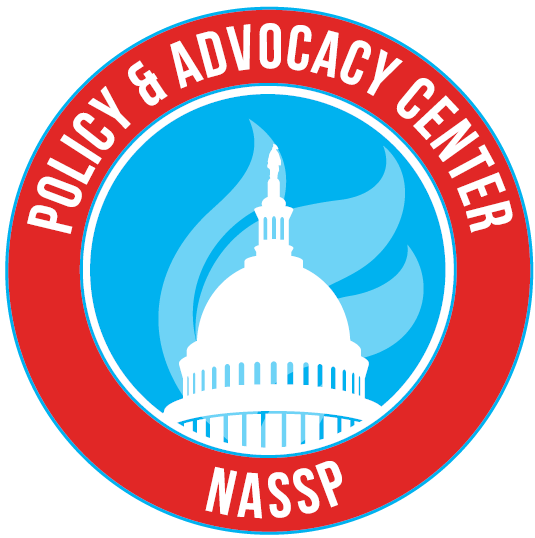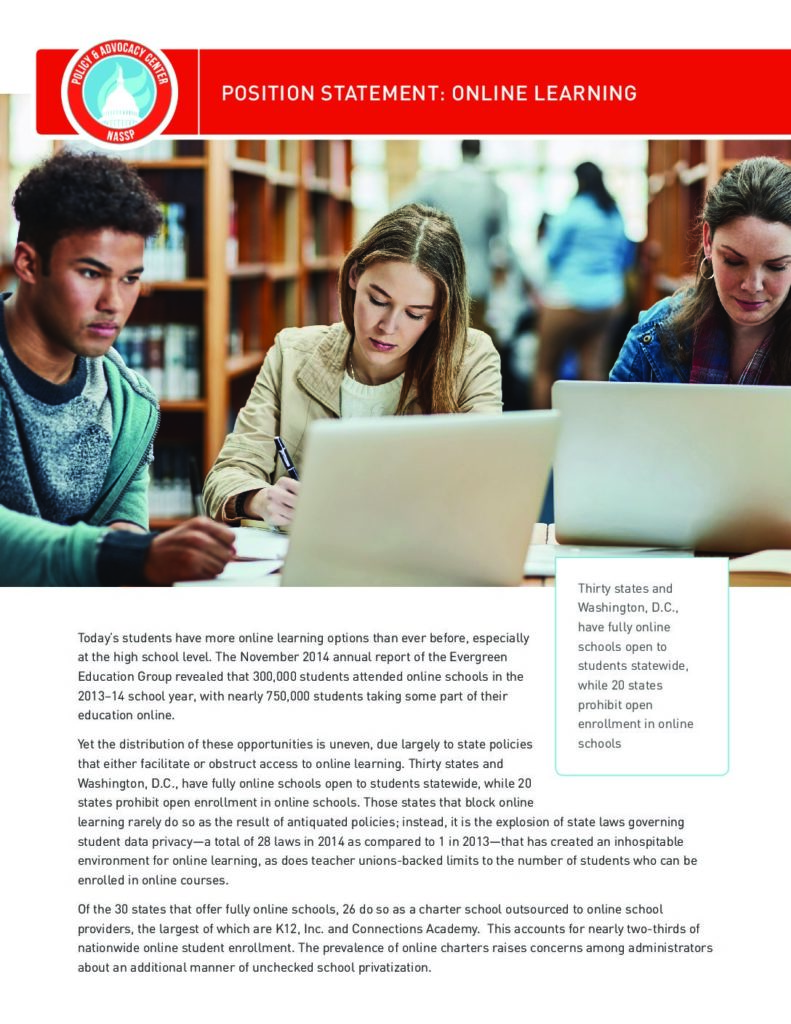Today’s students have more online learning options than ever before, especially at the high school level. The November 2014 annual report of the Evergreen Education Group revealed that 300,000 students attended online schools in the 2013–14 school year, with nearly 750,000 students taking some part of their education online.
Yet the distribution of these opportunities is uneven, due largely to state policies that either facilitate or obstruct access to online learning. Thirty states and Washington, D.C., have fully online schools open to students statewide, while 20 states prohibit open enrollment in online schools. Those states that block online learning rarely do so as the result of antiquated policies; instead, it is the explosion of state laws governing student data privacy—a total of 28 laws in 2014 as compared to 1 in 2013—that has created an inhospitable environment for online learning, as does teacher unions-backed limits to the number of students who can be enrolled in online courses.

Of the 30 states that offer fully online schools, 26 do so as a charter school outsourced to online school providers, the largest of which are K12, Inc. and Connections Academy. This accounts for nearly two-thirds of nationwide online student enrollment. The prevalence of online charters raises concerns among administrators about an additional manner of unchecked school privatization.
Yet, school leaders recognize the significant advantages that online learning provides. The most commonly cited advantage is an abundance of course options for students in remote areas where schools often lack the capacity to provide courses in limited demand. Students also cite the flexibility to complete coursework, allowing for after-school jobs and extracurricular activities.
Those advantages are accompanied by drawbacks. Ironically, course opportunities are often stymied in the smallest districts for the students most in need because of Internet bandwidth constraints. And, unfortunately, when the student takes an online course, the home school suffers a budget reduction as a portion of a district’s per-pupil expenditure flows to the provider of the online course.
The school leader’s most common and consistent concern, however, is their inability to lead the learning opportunities of students engaged in online courses outside the principal’s purview. Instructional leaders seek a measure of oversight over content and process to ensure alignment with local curricula guidelines. This concern has been addressed in recent years by the advent of blended learning models in which students engage in a combination of online and face-to-face learning opportunities throughout their coursework. Blended learning assumes a variety of forms, but all are motivated by a desire to optimize the efficiencies and advantages of online delivery and the mandate to renew genuine personalization in the context of online learning (Horn and Staker, 2015).
In examining the evolution of online learning in model schools, a group of large foundations and education technology advocates proposed a four-part working definition of personalized learning as a student-centered enterprise. The definition takes into account a student’s strengths, needs, motivations, and goals, and gives a nod to the importance of students designing their own learning paths and the learning environments in which they are pursued. School leaders are encouraged by this development, as it both renews the importance of personalization-central to the Breaking Ranks Framework for School Improvement-and taps the potential of technology to truly empower students rather than merely deliver content.
Guiding Principles
- Schools must continually seek to make learning personal by building better relationships within the school, opening the door to learning, and helping students build a more productive and profound relationship with ideas (NASSP, p. 2).
- Educational equity must be continually pursued and preserved so no student lacks educational opportunity because of location or demography.
- School choice is appropriate within the public school system as long as equal opportunity and access are ensured without discrimination on the basis of race, gender, socioeconomic status, or disability, and as long as accountability requirements are consistently applied.
- Technology-enhanced instruction has the capacity to engage students deeply in their work, connect them with countless resources, and allow them to collaborate across time and space.
- Student data should be used only for the purpose of informing education policy, practice, and research, and delivering educational services to students. Yet data privacy concerns should not preclude the adoption of online and blended learning.
Recommendations
Recommendations for Federal Policymakers
- Support independent research and evaluation of virtual schools, particularly related to their ongoing performance, teacher quality, preparation, and professional development, in addition to how the for-profit schooling business model affects the quality of online learning experiences.
- Expand the Lifeline program administered by the Federal Communications Commission to allow recipients to pay for broadband services and Wi-Fi connections in their homes to address the “homework gap.”
Recommendations for State Policymakers
- Hold virtual schools accountable for not just test scores, but also for creating a personalized learning environment for all students.
- Ensure that online curricula are aligned to state standards and with the expectations of colleges and employers.
- Develop funding mechanisms that do not determine school funding solely based on student seat time or a requirement that students be in a classroom.
- Ensure that any laws requiring online learning experiences as a requirement for high school graduation also include mechanisms to safeguard the content quality.
- Ensure teachers are provided professional development and training opportunities related to online instruction, including developing and customizing online courses and facilitating student engagement in an online environment.
Recommendations for District Leaders
- Create funding systems that do not reduce a school’s per-pupil funding when a student takes an online course.
- Use Title IV funding under the Elementary and Secondary Education Act to support the effective use of technology, including professional learning opportunities for principals and teachers, efforts to build the technological capacity and broadband infrastructure, blended learning projects, and distance learning programs.
Recommendations for School Leaders
- Become familiar with the various models of blended learning and their potential to maximize learning opportunities.
- Audit the school’s current course limitations and explore online learning options to fill curricular gaps and enhance existing offerings.
- Seek out professional learning networks to build their own understanding of what currently works in schools with regard to online and blended learning.
Resources
Evergreen Education Group (2014). Keeping pace with K-12 digital learning, volume 11. Author.
Horn, Michael B. and Heather Staker (2015). Blended: Using disruptive innovation to improve schools. Jossey Bass.
Molnar, A. (Ed.); Huerta, L., Shafer, S.R., Barbour, M.K., Miron, G., Gulosino, C. (2015). Virtual schools in the U.S. 2015: politics, performance, policy, and research evidence. Boulder, CO: National Education Policy Center. Retrieved from http://nepc.colorado.edu/publication/virtual-schools-annual-2015.
National Association of Secondary School Principals (2011). Breaking ranks: The comprehensive framework for school improvement. Author.
Working definition of personalized learning. (2014). Retrieved at http://www.newschools.org.
Zweig, J., Stafford, E., Clements, M., and Pazzaglia, A.M. (2015). Professional experiences of online teachers in Wisconsin: results from a survey about training and challenges (REL 2016-110). Washington, D.C.: U.S. Department of Education, Institute of Education Sciences, National Center for Education Evaluation and Regional Assistance, Regional Educational Laboratory Midwest. Retrieved from http://ies.ed.gov/ncee/edlabs.

